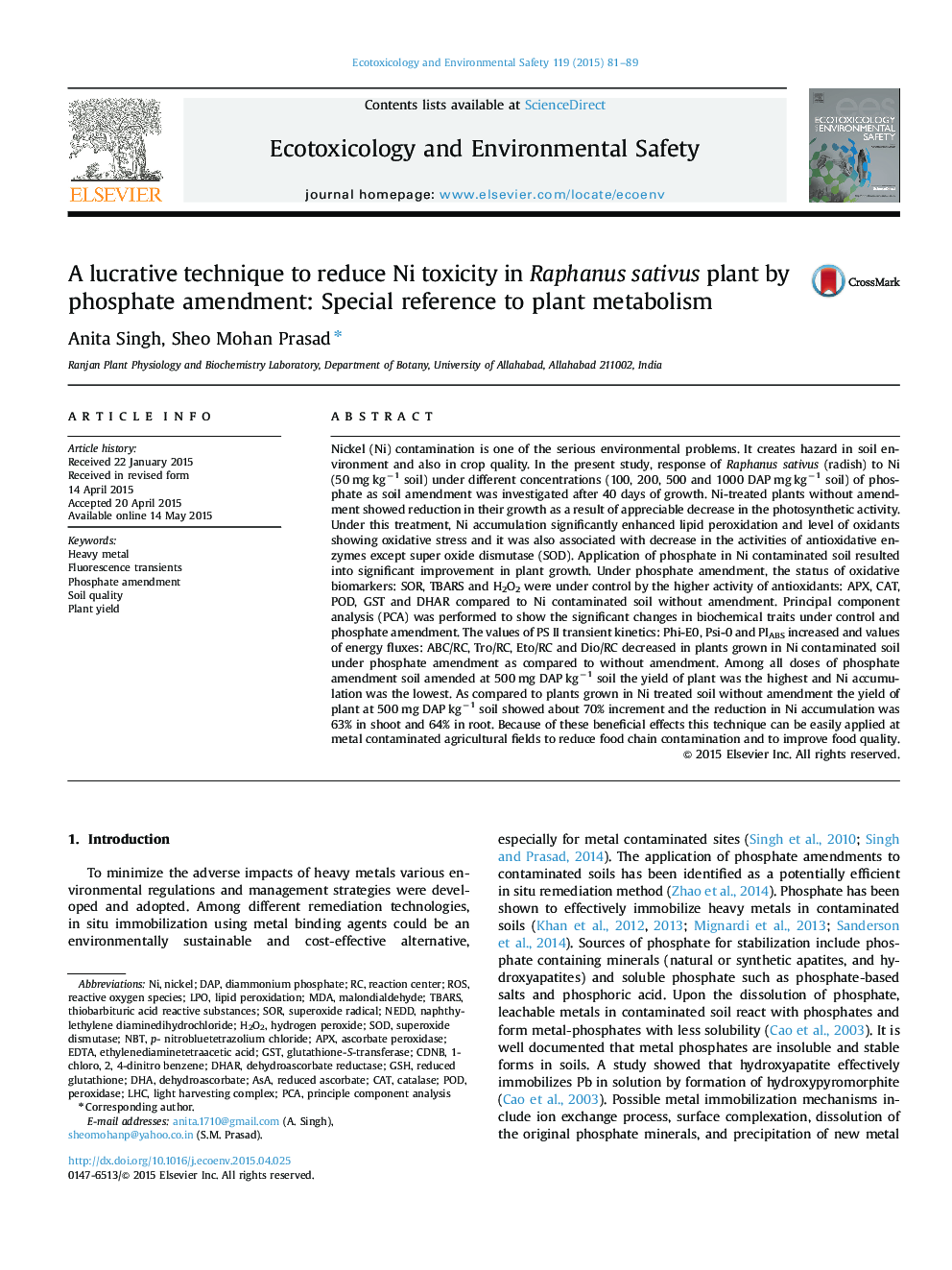| کد مقاله | کد نشریه | سال انتشار | مقاله انگلیسی | نسخه تمام متن |
|---|---|---|---|---|
| 4419629 | 1618944 | 2015 | 9 صفحه PDF | دانلود رایگان |

• The agricultural activities in the catchment area of cities are contaminated by heavy metal.
• Nickel (Ni) is an ubiquitous toxic elements posing a critical concern to human and environmental health.
• For reducing risk caused by metals, various strategies have been applied in recent years.
• Phospahte amendment (particularly diammonium phosphate: DAP) were applied in present study to reduce metal availability.
• 500 mg DAP kg−1 dose was found to be best for reducing Ni availability and increasing yield of the plant.
Nickel (Ni) contamination is one of the serious environmental problems. It creates hazard in soil environment and also in crop quality. In the present study, response of Raphanus sativus (radish) to Ni (50 mg kg−1 soil) under different concentrations (100, 200, 500 and 1000 DAP mg kg−1 soil) of phosphate as soil amendment was investigated after 40 days of growth. Ni-treated plants without amendment showed reduction in their growth as a result of appreciable decrease in the photosynthetic activity. Under this treatment, Ni accumulation significantly enhanced lipid peroxidation and level of oxidants showing oxidative stress and it was also associated with decrease in the activities of antioxidative enzymes except super oxide dismutase (SOD). Application of phosphate in Ni contaminated soil resulted into significant improvement in plant growth. Under phosphate amendment, the status of oxidative biomarkers: SOR, TBARS and H2O2 were under control by the higher activity of antioxidants: APX, CAT, POD, GST and DHAR compared to Ni contaminated soil without amendment. Principal component analysis (PCA) was performed to show the significant changes in biochemical traits under control and phosphate amendment. The values of PS II transient kinetics: Phi-E0, Psi-0 and PIABS increased and values of energy fluxes: ABC/RC, Tro/RC, Eto/RC and Dio/RC decreased in plants grown in Ni contaminated soil under phosphate amendment as compared to without amendment. Among all doses of phosphate amendment soil amended at 500 mg DAP kg−1 soil the yield of plant was the highest and Ni accumulation was the lowest. As compared to plants grown in Ni treated soil without amendment the yield of plant at 500 mg DAP kg−1 soil showed about 70% increment and the reduction in Ni accumulation was 63% in shoot and 64% in root. Because of these beneficial effects this technique can be easily applied at metal contaminated agricultural fields to reduce food chain contamination and to improve food quality.
Figure optionsDownload as PowerPoint slide
Journal: Ecotoxicology and Environmental Safety - Volume 119, September 2015, Pages 81–89